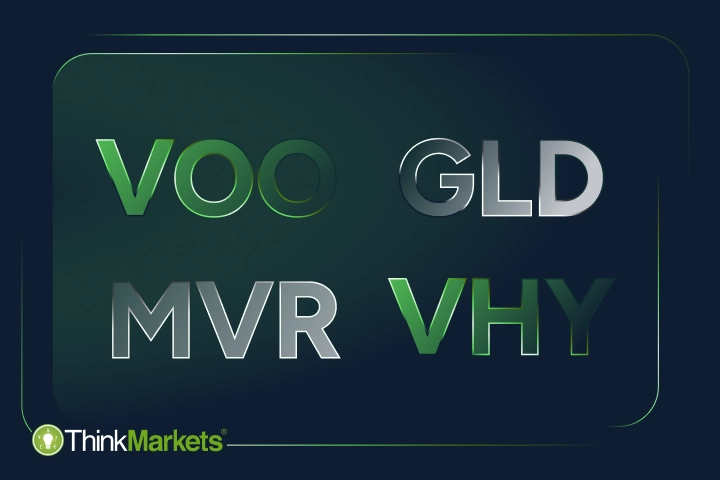Artikel (1)

How to trade ETFs
<p>Like many other financial instruments on the stock market, you can invest and actively trade exchange-traded funds (ETFs). In this article, we’ll explore the difference between these two terms and review an example of an ETF CFD trade.</p> <h2>ETF investing</h2> <p paraeid="{5ad726ed-a254-4dd0-bca1-9a60545da1e0}{25}" paraid="1969427249">To draw a clear line, at ThinkMarkets, we consider anything that implies ownership as an investment. It may be buying an ETF and holding it for an extended period of time or buying and selling actively – in both cases, you acquire ownership of an instrument upon purchase, in this case, an ETF. </p> <p paraeid="{5ad726ed-a254-4dd0-bca1-9a60545da1e0}{39}" paraid="784156085">ETFs are one of the most popular forms of investment in the world due to their diversification, low expense ratio and tax efficiency. </p> <p paraeid="{5ad726ed-a254-4dd0-bca1-9a60545da1e0}{49}" paraid="434731094">When it comes to expense ratio, passive ETFs are the most cost-effective, but even actively managed ETFs can have lower fees than other investment instruments. These combing factors make ETFs a popular choice among long-term investors. </p> <h2>ETF trading</h2> <p>Another way of potentially capitalising on ETFs is to speculate on price movements without buying the underlying asset via derivatives, such as CFDs, . This is another characteristic that differentiates ETFs from mutual funds, as the latter offers only investing and not active trading. <br /> <br /> To read more about CFD trading, check out our <a href="/en/trading-academy/cfds/what-are-cfds">CFD trading: a beginner’s guide</a>, where we cover this concept in detail. In this guide, we’ll explore a real-life example of trading an ETF with CFDs.</p> <h2>How to trade ETFs with CFDs</h2> <p>For illustration purposes, let’s say you decide to trade on the ETF SPDR gold trust or GLD. When writing its price was USD 186.45.</p> <h3>Going long</h3> <p>If you think the price is going to increase, you open a buy position, also called going long. The price goes up to USD 196.45, and you decide to close the trade. The USD 10 price difference is your gain. If the price moves in the opposite direction and drops to USD 176.45, USD 10 would become your loss.<br /> <br /> <img alt="TFMKT-4171-Image2-1.png" src="/getmedia/a08d79eb-eb87-4731-8f2c-1577ff38d783/article-how-to-trade-etfs-long.webp" /></p> <h3>Going short</h3> <p>If you think the price is going to drop, you open a sell position or go short. In this case, if the price drops to USD 176.45, USD 10 is your profit. If the market moves against your prediction, and the price goes up to 196.45. USD 10 becomes your loss.<br /> <br /> <img alt="" src="/getmedia/dd5a0af3-6df8-4bf4-a7f7-ca203cdcb677/article-how-to-trade-etfs-short.webp" /></p> <h3>Spreads</h3> <p>When you place trades, you will notice that the buy price to open a trade is slightly higher than the sell price. This difference is called a spread. Essentially, it’s a trade cost that gets automatically deducted from every trade and needs to be covered by a trader to start making a profit.<br /> <br /> When you trade ETF CFDs with ThinkMarkets, you can see a spread of all the ETFs and other instruments right within your trading platform, ThinkTrader, as illustrated below. For example, the spread of GLD is only 7 cents.<br /> <br /> <img alt="" src="/getmedia/3a5d7260-0e45-4011-8d55-0398429716a9/article-how-to-trade-etfs-spreads.webp" /></p> <h3>Leverage</h3> <p>Another important attribute of CFD trading is leverage. Trading with leverage means using funds borrowed from a broker to open larger positions. All you need to pay is a small deposit called a margin. The larger you leverage, the smaller the deposit is.<br /> <br /> GLD has 10:1 leverage, and your margin is only 1/10th of the full amount of the buy price. It means that to open either a buy or sell position, you'll need to put down USD 18.65.<br /> <br /> <img alt="TFMKT-4171-Image5.png" src="/getmedia/3302e40d-e11c-4051-801c-52237a9f907c/article-how-to-trade-etfs-leverage.webp" /><br /> <br /> You can find leverage and other important details for every ETF available on ThinkMarkets on our <a href="/en/contract-specifications">Contract specifications</a> page.<br /> <br /> The amount of margin also depends on the size of your trade. In trading, positions are measured in lots. The USD 18.65 we mentioned above is a margin required for trading one full lot, which equals one full ETF share. With ThinkMarkets, you can open positions as small as 0.1 lot, and your leverage, in this case, would be only USD 1.87.<br /> <br /> Keep in mind that despite opening positions at a fraction of the trade's full price, it has the same potential as a regular, fully-priced trade because your broker covers the rest. It means that if you go long and your margin is only USD 1.87, when the price increases by USD 10, your profit is still USD 10, which is bigger than your initial capital. However, if your prediction is incorrect and the price moves in the opposite direction by USD 10, the full amount is your loss, even though your capital was much smaller. That's why it is crucial to always use <a href="/en/trading-academy/cfds/risk-management-tools-in-cfd-trading">risk management tools</a>, such as stop loss and take profit.<br /> <br /> Now, you may be wondering how to determine whether you should open a long or a short CFD trade on ETFs.<br /> <br /> In the next article, <a href="/en/trading-academy/etfs/what-affects-etfs-prices">What affects ETF prices?</a>, we’ll explain how an ETF price is set and talk about events that may indicate potential trading opportunities.</p>